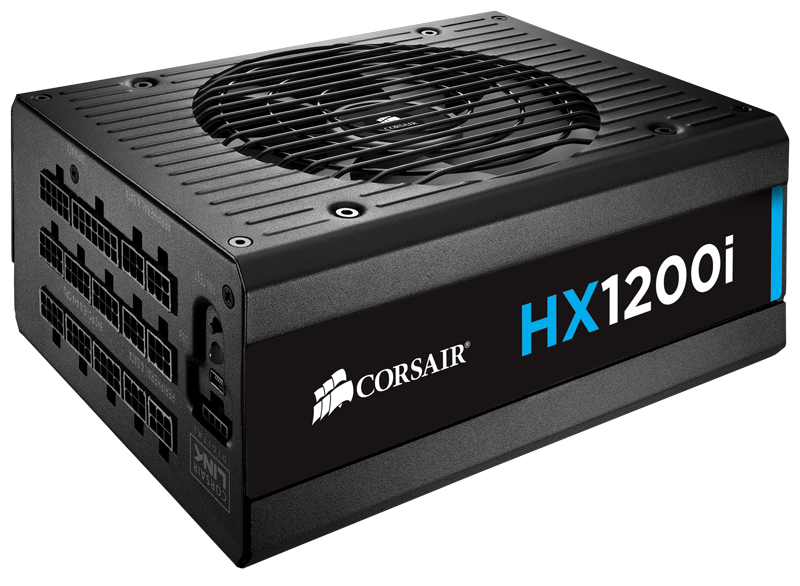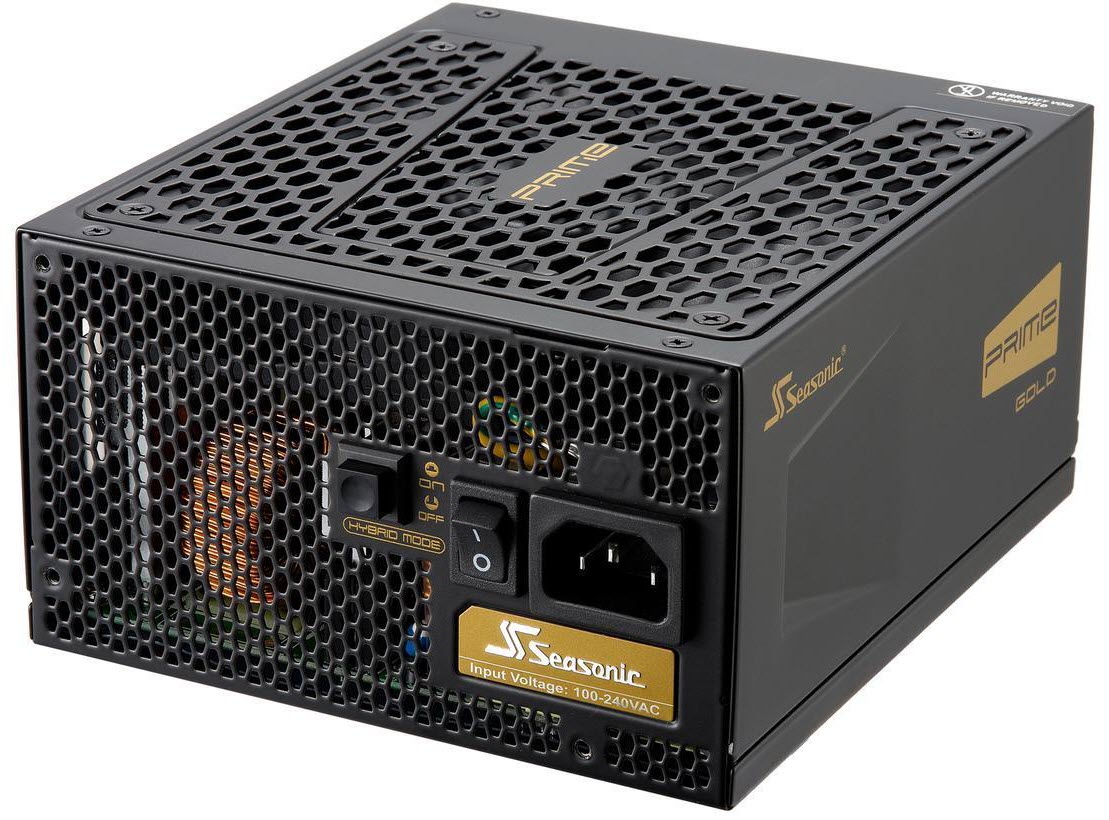Thermaltake Toughpower Grand RGB 1200W Platinum PSU Review
Why you can trust Tom's Hardware
Load Regulation, Hold-Up Time & Inrush Current
To learn more about our PSU tests and methodology, please check out How We Test Power Supply Units.
Primary Rails & 5VSB Load Regulation
Load Regulation testing is detailed here.
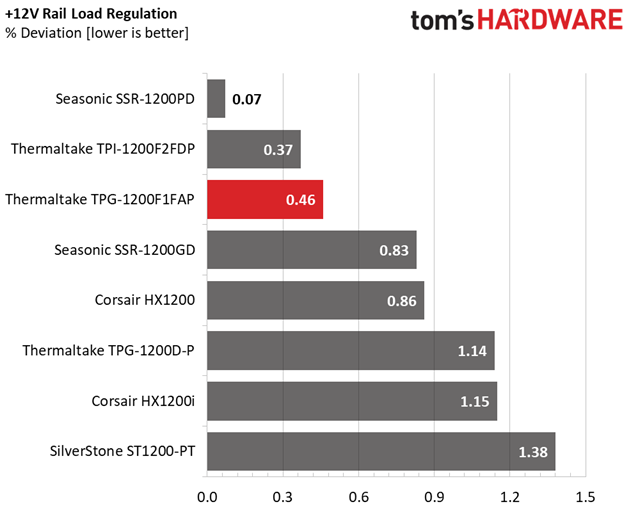
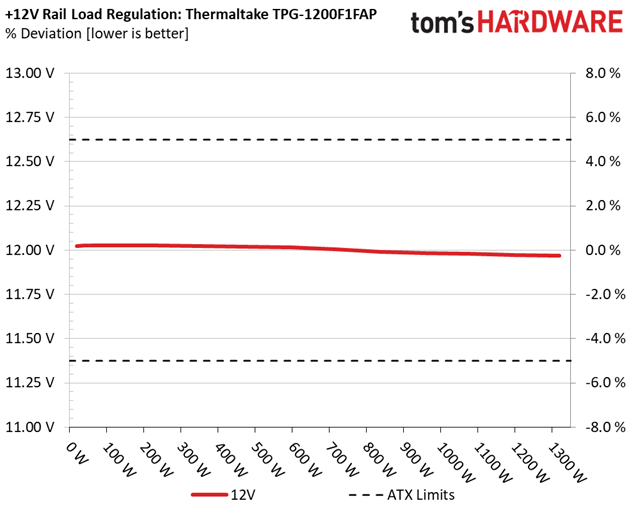
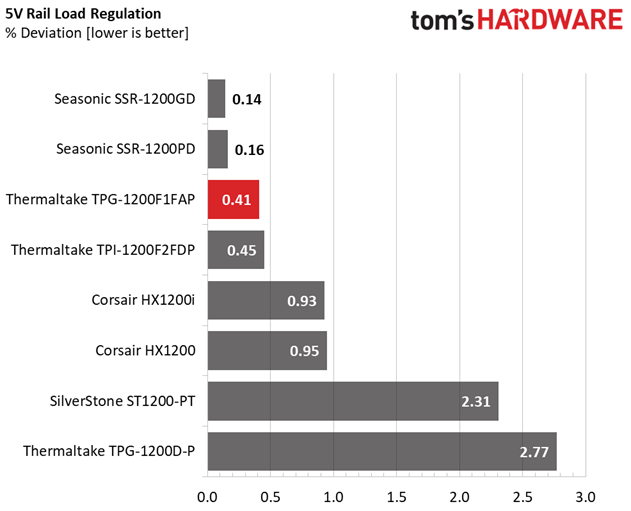
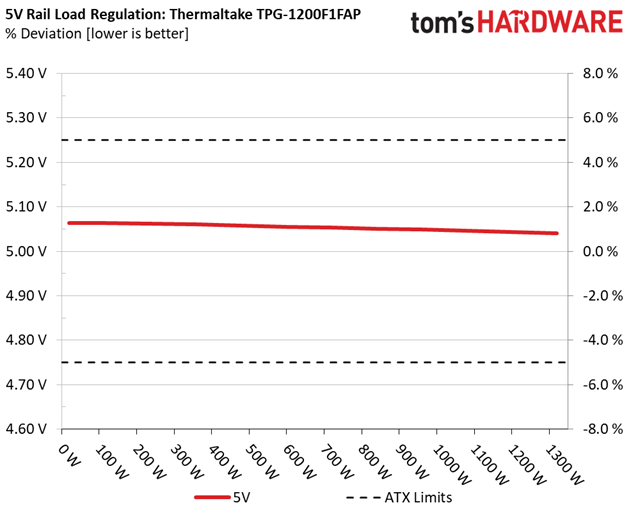

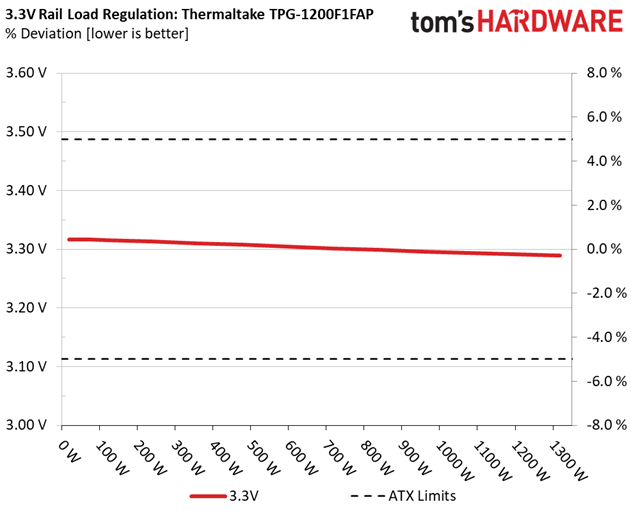
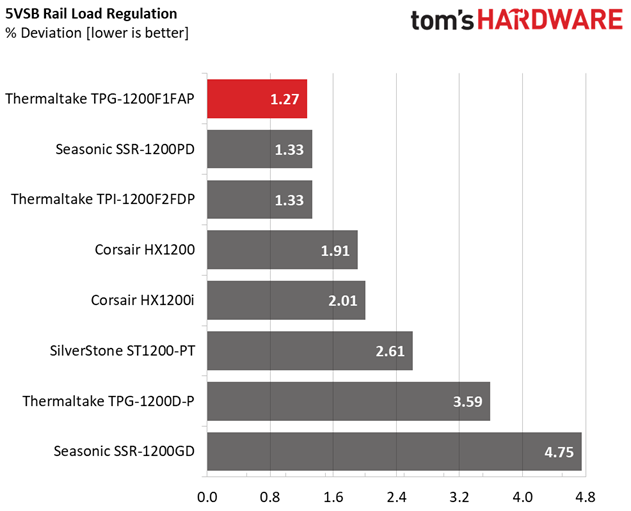
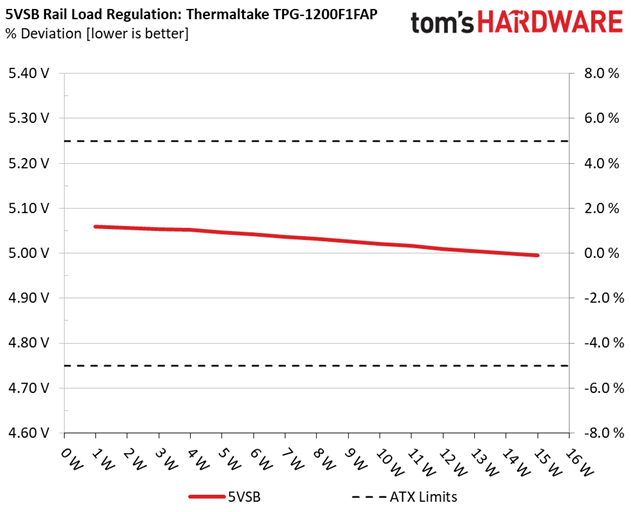
Hold-Up Time
Our hold-up time tests are described in detail here.
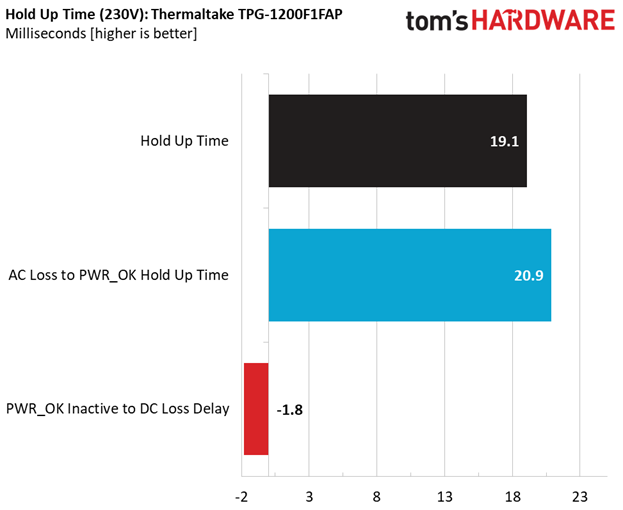
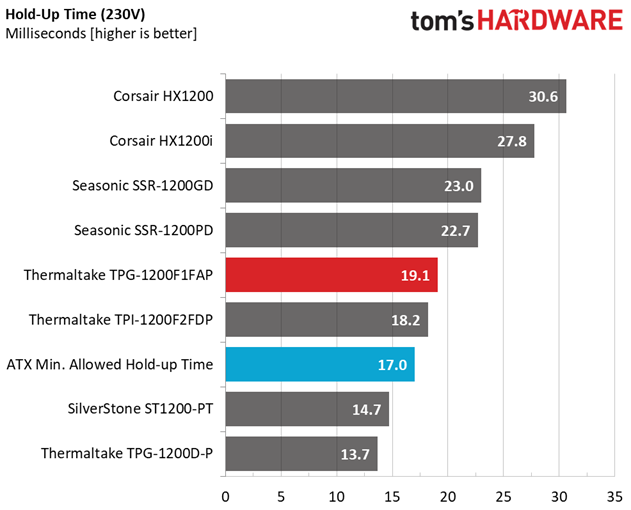
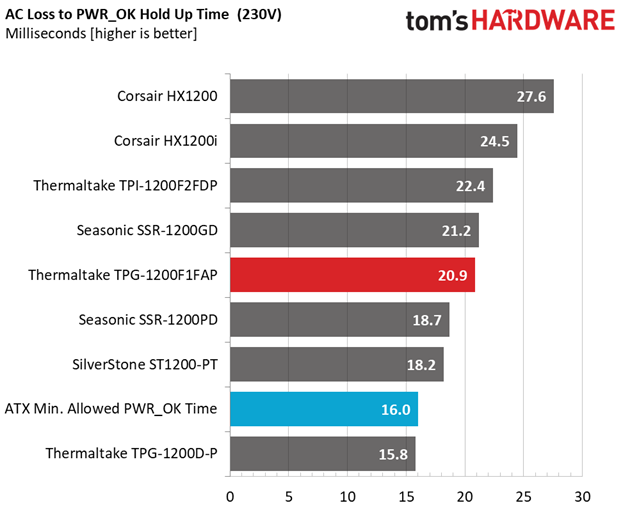
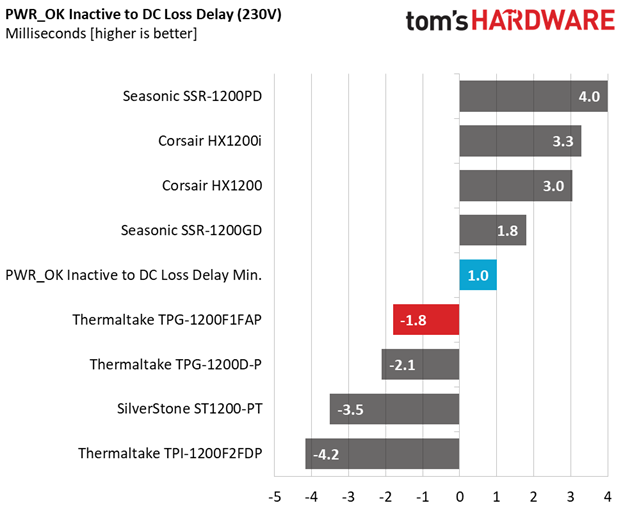
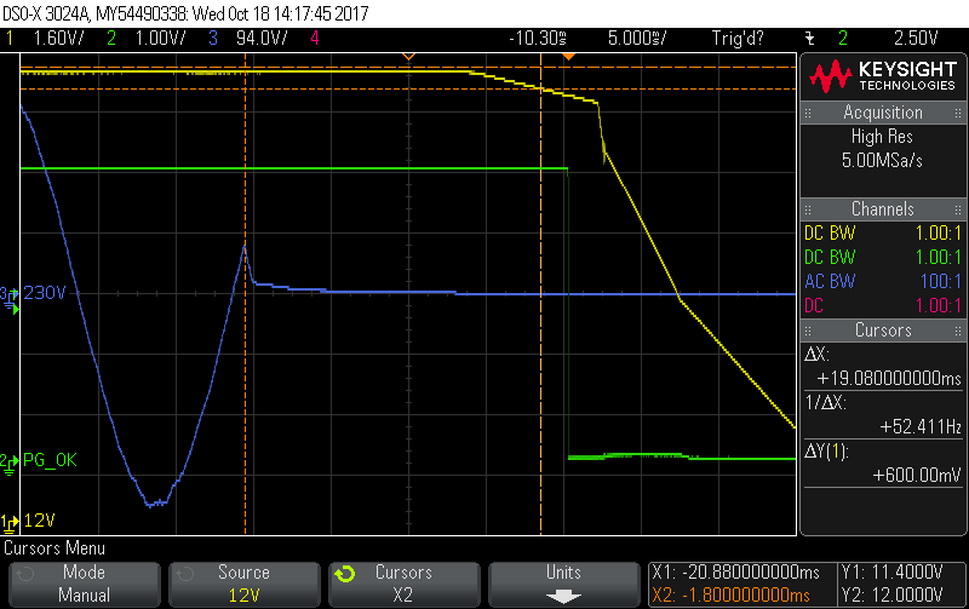
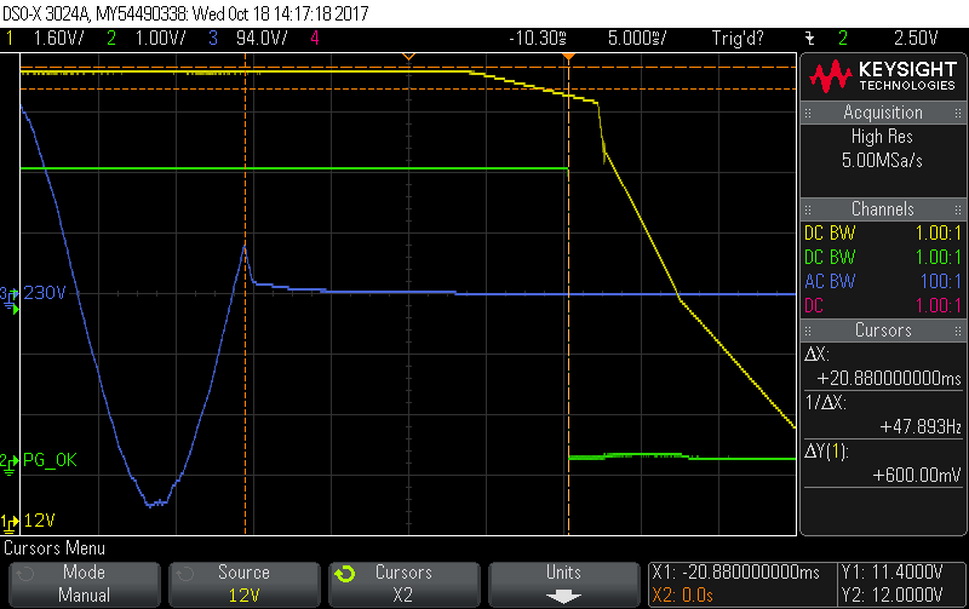
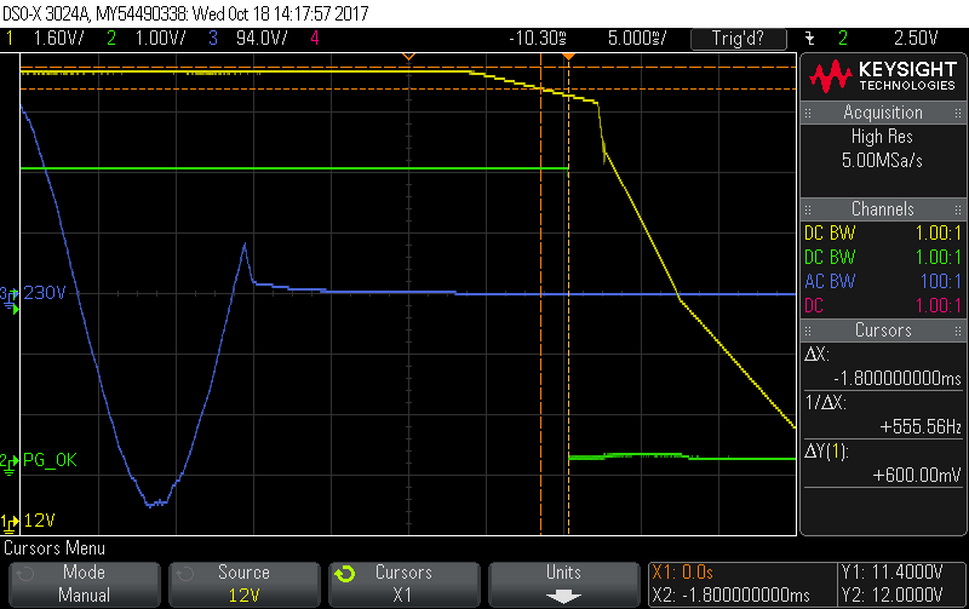
The hold-up time we measure is long enough. However, the power-good signal is inaccurate. We consider this completely unacceptable for a high-end PSU.
Inrush Current
For details on our inrush current testing, please click here.
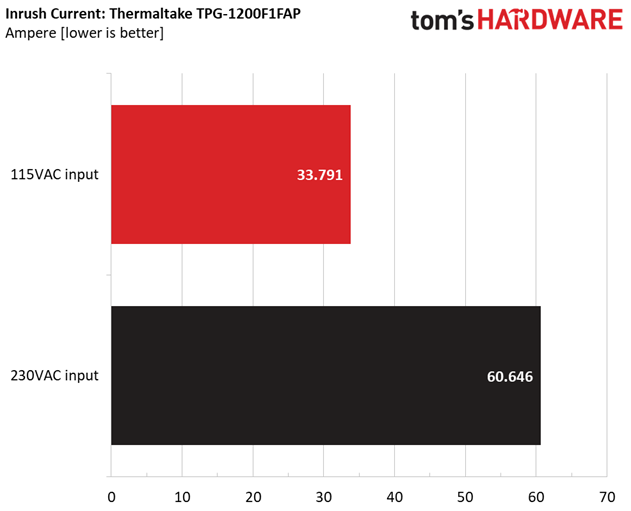
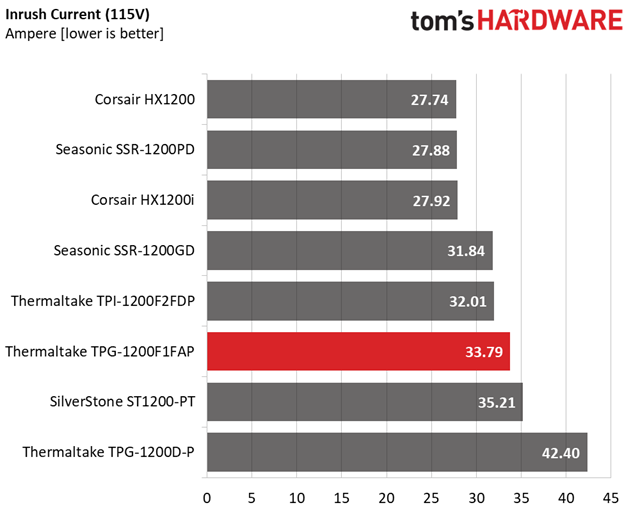
Inrush current readings are normal, given this PSU's bulk caps.
Load Regulation & Efficiency Measurements
The first set of tests reveals the stability of the voltage rails and the TPG-1200F1FAP's efficiency. The applied load equals (approximately) 10 to 110 percent of the PSU's maximum load in increments of 10 percentage points.
Get Tom's Hardware's best news and in-depth reviews, straight to your inbox.
We conducted two additional tests. During the first, we stressed the two minor rails (5V and 3.3V) with a high load, while the load at +12V was only 0.1A. This test reveals whether a PSU is compatible with Intel's C6/C7 sleep states or not. In the second test, we determined the maximum load the +12V rail could handle with minimal load on the minor rails.
| Test # | 12V | 5V | 3.3V | 5VSB | DC/AC (Watts) | Efficiency | Fan Speed | PSU Noise | Temps (In/Out) | PF/AC Volts |
|---|---|---|---|---|---|---|---|---|---|---|
| 1 | 8.167A | 1.975A | 1.990A | 0.991A | 119.832 | 88.535% | 0 RPM | <6.0 dB(A) | 46.70°C | 0.983 |
| 12.028V | 5.064V | 3.315V | 5.047V | 135.350 | 38.25°C | 115.13V | ||||
| 2 | 17.360A | 2.960A | 2.985A | 1.188A | 239.635 | 91.810% | 0 RPM | <6.0 dB(A) | 47.44°C | 0.994 |
| 12.026V | 5.062V | 3.313V | 5.042V | 261.013 | 38.47°C | 115.12V | ||||
| 3 | 26.924A | 3.459A | 3.500A | 1.386A | 359.803 | 92.617% | 0 RPM | <6.0 dB(A) | 48.80°C | 0.996 |
| 12.024V | 5.060V | 3.310V | 5.036V | 388.483 | 38.89°C | 115.12V | ||||
| 4 | 36.477A | 3.954A | 3.987A | 1.588A | 479.669 | 92.547% | 0 RPM | <6.0 dB(A) | 49.86°C | 0.995 |
| 12.021V | 5.058V | 3.308V | 5.032V | 518.300 | 39.31°C | 115.12V | ||||
| 5 | 45.702A | 4.949A | 4.990A | 1.790A | 599.565 | 92.111% | 1015 RPM | 27.7 dB(A) | 40.00°C | 0.996 |
| 12.014V | 5.055V | 3.304V | 5.026V | 650.915 | 50.91°C | 115.12V | ||||
| 6 | 54.962A | 5.936A | 5.998A | 1.990A | 719.495 | 91.347% | 1033 RPM | 28.3 dB(A) | 41.10°C | 0.998 |
| 12.003V | 5.053V | 3.301V | 5.021V | 787.652 | 53.74°C | 115.13V | ||||
| 7 | 64.237A | 6.935A | 6.999A | 2.191A | 839.369 | 90.547% | 1158 RPM | 31.3 dB(A) | 42.68°C | 0.998 |
| 11.991V | 5.050V | 3.299V | 5.017V | 926.996 | 56.43°C | 115.13V | ||||
| 8 | 73.511A | 7.924A | 8.008A | 2.393A | 959.273 | 89.689% | 1288 RPM | 34.0 dB(A) | 44.20°C | 0.998 |
| 11.983V | 5.049V | 3.296V | 5.010V | 1069.552 | 59.01°C | 115.13V | ||||
| 9 | 83.210A | 8.431A | 8.529A | 2.395A | 1079.333 | 88.701% | 1442 RPM | 37.3 dB(A) | 45.26°C | 0.997 |
| 11.978V | 5.047V | 3.294V | 5.009V | 1216.819 | 60.94°C | 115.12V | ||||
| 10 | 92.670A | 8.929A | 9.022A | 3.001A | 1199.248 | 87.573% | 1572 RPM | 41.4 dB(A) | 45.97°C | 0.993 |
| 11.973V | 5.043V | 3.291V | 4.995V | 1369.434 | 61.92°C | 115.10V | ||||
| 11 | 102.733A | 8.933A | 9.032A | 3.003A | 1319.228 | 86.225% | 1820 RPM | 43.3 dB(A) | 47.93°C | 0.987 |
| 11.968V | 5.040V | 3.289V | 4.992V | 1529.987 | 65.70°C | 115.07V | ||||
| CL1 | 0.100A | 16.027A | 16.002A | 0.005A | 135.516 | 82.663% | 0 RPM | <6.0 dB(A) | 49.88°C | 0.983 |
| 12.030V | 5.065V | 3.319V | 5.088V | 163.937 | 44.24°C | 115.13V | ||||
| CL2 | 99.939A | 1.002A | 1.000A | 1.002A | 1210.762 | 87.547% | 1820 RPM | 43.3 dB(A) | 48.42°C | 0.991 |
| 11.981V | 5.047V | 3.296V | 5.029V | 1382.982 | 64.65°C | 115.10V |
The load regulation on every rail is tight, with +12V, 5V, and 3.3V all within 1%. Even the 5VSB rail achieves super-tight load regulation compared to what we're used to.
Thermaltake's fan profile isn't particularly aggressive; the fan operates passively at up to 40% load and its noise only exceeds 30 dB(A) during our 70% load test. The fan profile does seem to be tied to load level, based on our CL1 benchmark where the PSU heats up quite a bit but doesn't receive any cooling. This applies huge stress to the components inside. In our our opinion, the fan profile should take temperature into account more than anything.
With 20% and 50% load, the PSU satisfies 80 PLUS' requirements for a Platinum rating. It comes close to 89% with full load, too. Subjected to lower temperatures like the ones 80 PLUS uses for testing, it'd be easy for Thermaltake's TPG-1200F1FAP to earn its Platinum badge. Obviously, digital control on the primary side does wonders for efficiency.
MORE: Best Power Supplies
MORE: How We Test Power Supplies
MORE: All Power Supply Content
Current page: Load Regulation, Hold-Up Time & Inrush Current
Prev Page Teardown & Component Analysis Next Page Efficiency, Temperature & Noise
Aris Mpitziopoulos is a contributing editor at Tom's Hardware, covering PSUs.
-
mapesdhs More RGB? *yawn* And is this usefully better in any way in terms of performance, etc. than the old 1275W XT Gold?Reply

